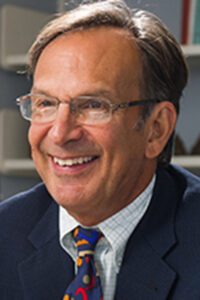New data emerging from multiple labs suggest that uncoupling protein 1 (UCP1) does not play a major role in adaptive thermogenesis. The effects attributed to UCP1 are actually due to other thermogenic pathways that involve calcium, creatine, and possibly other molecules, according to the research. UCP1, long thought to be the only protein responsible for non-shivering thermogenesis in mammals, appears to play little or no role in brown adipose tissue and adaptive thermogenesis.
“For the last 10 years or so, there has been a growing appreciation that increased energy expenditure in brown fat has important implications in improving glucose homeostasis,” said Shingo Kajimura, PhD, Principal Investigator of Endocrinology, Diabetes, and Metabolism, Harvard Medical School and Beth Israel Deaconess Medical Center. “It has been thought that brown fat uses UPC1, which was thought to be the only thermogenic protein in mammals. It turns out that’s not true. There are many independent pathways to dissipate energy.”
Dr. Kajimura is one of four researchers who will discuss Emerging Paradigms of Uncoupled Bioenergetics in Metabolic Disease on Sunday, June 27, from 8:00 a.m. – 10:00 a.m. ET. Dr. Kajimura will review the latest data on calcium futile cycling in adipose tissue thermogenesis, while Muthu Periasamy, PhD, Professor of Medicine, University of Central Florida Burnett School of Biomedical Sciences College of Medicine, will discuss the latest findings on thermogenesis in skeletal muscle.
Gerald I. Shulman, MD, PhD, MACP, MACE, the George R. Cowgill Professor of Medicine (Endocrinology) and Professor of Cellular and Molecular Physiology, Yale University School of Medicine, will explore a new generation of mitochondrial uncouplers for the treatment of nonalcoholic fatty liver disease, nonalcoholic steatohepatitis, and type 2 diabetes. And Bruce Spiegelman, PhD, the Stanley J. Korsmeyer Professor of Cell Biology and Medicine, Dana-Farber Cancer Institute and Harvard Medical School, will explore new results in thermogenesis using the futile creatine cycle (FCC).

“People have always seen big effects in the UCP1 knockout mouse,” Dr. Spiegelman said. “We found that those big effects were not due to UCP1 itself, but rather changes in the mice due to the loss of UCP1, which basically destroys the function of their mitochondria. That means there are other pathways that play important roles in adaptive thermogenesis. And all of these new pathways are potentially druggable. There was no known way to drug UCP1.”
It’s not that UCP1 has no role in metabolism, Dr. Spiegelman explained. It appears to be active in anti-inflammatory pathways in adipose tissue. But UCP1 is not the dominant force in energy expenditure as was believed for so long.
None of these noncanonical pathways have been fully characterized, Dr. Kaijumra noted, but preclinical work is already leading to early stage clinical trials in type 2 diabetes. There are also research programs focusing on bioenergetic defects in aging, neurodegenerative diseases, cancer, and type 1 diabetes.
“In type 1, you can’t make enough insulin or you can’t release it,” Dr. Kaijumra said. “These are actually bioenergetic defects. These new pathways are fundamental to our understanding of multiple metabolic diseases and of life itself.”
Dr. Spiegelman’s lab is exploring potential interventions in the FCC to modify cachexia seen in cancer and cardiometabolic disease, particularly heart failure. Cachexia is a hypermetabolic state, while obesity and type 2 diabetes are hypometabolic. Dysregulation in the FCC appears to play a role in both.
“The understanding of energy metabolism and its relation to diabetes and obesity is undergoing a revolution,” Dr. Spiegelman said. “What people thought was the role of UCP1 is going to turn out to be the role of mitochondria. And these new pathways we will be talking about have very robust effects in diabetes and obesity.”
VIEW THIS PRESENTATION
Already registered?
View this presentation at ADA2021.org
Not yet registered?
Register now to access all presentations from the Virtual 81st Scientific Sessions

